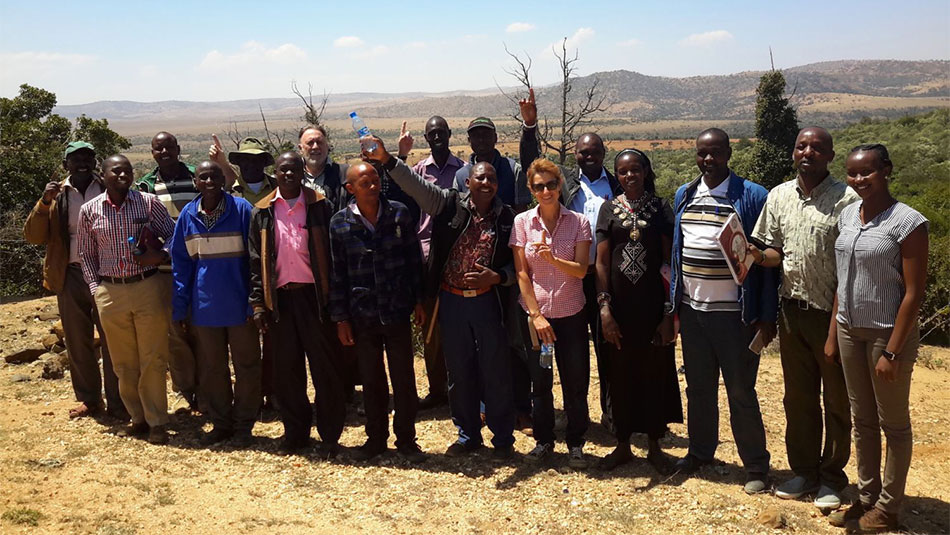The community wildlife sanctuary is private owned sanctuary in Kenya it is located in Mwatate division of Taita Taveta County of Coast province of Kenya. It covers an area of 125,000 acres. The community wildlife sanctuary is adjacent to Tsavo west national park and Taita Hills Wildlife sanctuary and serves as a wildlife corridor between Tsavo West and Tsavo East national park.
It Hosts cape buffalo, elephant, Maasai lion, leopard, Giraffe, zebra, Impala, waterbuck Thomsons gazelle, dik-dik, and other small animals including a great diversity of birds life.

Volunteer activities
De-snaring
De- snaring is removing wire or snares or traps that poachers set across animal trucks to capture and kill wildlife. The poachers set the wire strategically with the aim of trapping the animals by the neck so as to suffocate it. This is a very cruel method as it is slow and agonizing death for an animal. For this reason ,we search for snares at poachers’ hot sport and remove them.
Bush Patrols
Daily game drives to the park with the help of sanctuary ranges volunteers makes bush patrols to monitor animals for their safety from poachers.
This patrols helps to identify any injured animal or orphan which can easily die for lack of treatment and tender care. Volunteers take records of such incidence and report the case to the Kenya Wildlife Service is in charge of all wildlife in Kenya. Guiding and giving talks to tourists
In the sanctuaries, we have two hotels and camp lodge in which tourist spends their holiday while viewing wildlife. Volunteer help in guiding the tourist to where animals have been spotted for example the big cats and to make sure the animals are not crowded by the tourist thus interfering with their freedom in their habitat.
Volunteers are also involved in giving talks to tourist on animal behaviors in their habitats and importance of conservation.
They also develop presentations on animal interactions during evening times in the hotels.
Research on Human-wildlife conflict
The wildlife especially the elephant do cross over the neighboring community farm and the outcome is massive destructions thus creating hostilities towards wildlife. Volunteers will be involved in researching sustainable solutions on this conflict and developing an alternative source of income for the community.
Community Outreach and Education
Wildlife goes hand in hand with tree planting, for animals to depends on trees for survival. The sanctuary we have indigenous seedlings to plant and to give to the community and thus for this reasons volunteers have a special visits to the community to talk about conservation and to plant trees.
School Visits
Volunteers will be involved in the education of wildlife and strengthening environmental school clubs on conservation.
More ideas are welcomed to run this project effectively.




 We support individuals by; providing placements, assisting with information and travel or other insurance products, hosting pre-departure preparation, supporting individuals and families whilst overseas with us and on their return.
We support individuals by; providing placements, assisting with information and travel or other insurance products, hosting pre-departure preparation, supporting individuals and families whilst overseas with us and on their return. UniversalGiving™ is an award-winning website that helps people give and volunteer with the top-performing projects all over the world. All projects are vetted through UniversalGiving's trademarked, proprietary Quality Model.™ 100% of each donation goes directly to the cause.
UniversalGiving™ is an award-winning website that helps people give and volunteer with the top-performing projects all over the world. All projects are vetted through UniversalGiving's trademarked, proprietary Quality Model.™ 100% of each donation goes directly to the cause.